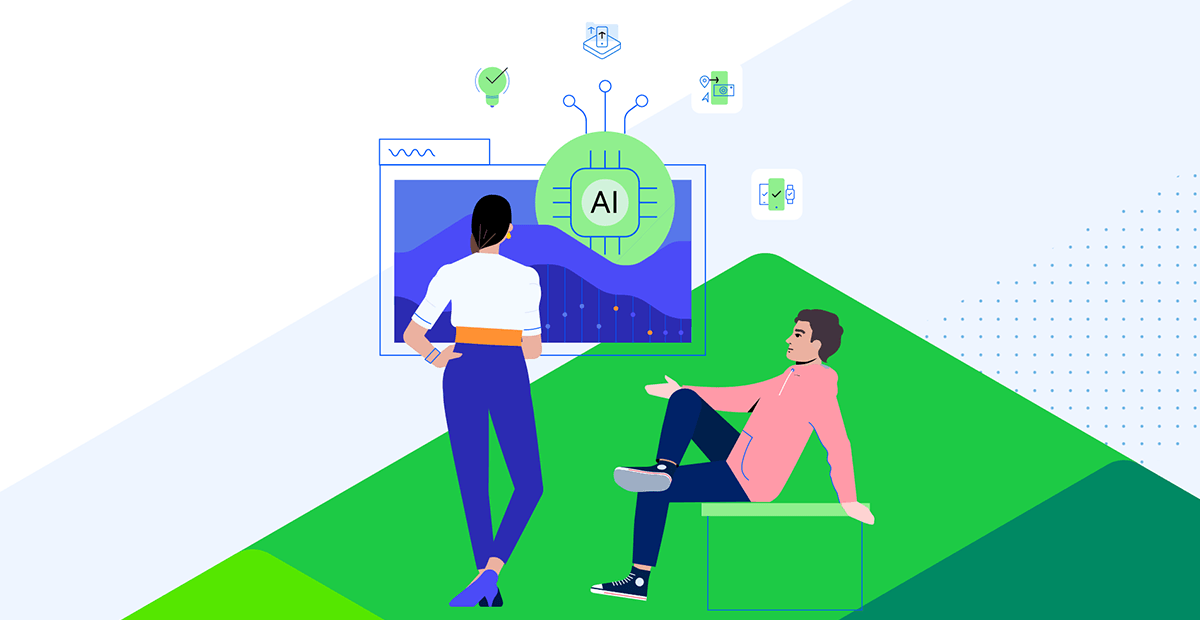7 Tips for Getting Started with Generative AI

AI. I haven’t had a discussion with a customer, partner or peer in the last six months where this topic, specifically generative AI, hasn’t come up. Companies are already taking AI-first approaches to new use cases—trying in the first instance to solve business and technical problems with generative AI. And some are already succeeding. We have customers who are already realizing benefits across their business after only a few weeks in production. Others are tentatively exploring the technology, creating working groups, bringing the technology into their “innovation labs” and testing and prodding the generative AI to see what they can do to help them transform their business.
The Value of a Short-Term, Agile Approach
While organizations are not wrong to be cautious and aware of generative AI’s limitations and flaws, I believe they are looking at the technology from a perspective that could turn into another “Digital Transformation Dead End.”
What do I mean by that? Well, businesses who take a top-down, holistic view of any transformation, often conclude that the benefit to the business must be large. They might look at multi-year, multi-stage, multi-stakeholder approaches. While this is great for long-term planning—generative AI is hard to plan for. It’s an agile, iterative technology, designed like most AI, to evolve and change, at a pace that we have rarely, if ever, seen before. It fails fast, learns, applies that learning and tries again. Every time “learning” and “evolving” and becoming better than the previous generation. But unlike human generations, these can be measured in months, weeks, days—even minutes. It’s important to take a top-down approach to developing an AI solution and consider where you can leverage it to provide rapid value for the business. Moving to an agile methodology means you’ll have the flexibility to pivot when new technical advances happen in generative AI.
I would argue that a more practical, short-term, agile approach is needed. One that, at first, will address small incremental changes, perhaps to internal business processes, that will eventually add up to significant cost savings, better business products and new ways for customers to engage and use your products and services.
7 Tested Tips for Getting Started with AI
With that in mind, here are some things I see working for our enterprise customers that might help you in the planning and execution of your generative AI and other AI projects.
- Start small. Find use cases in your business that could be addressed in weeks or months, rather than looking at multi-year projects.
- Take an agile, iterative, fail-fast approach. Initially, the generative AI you choose might not deliver the right answer; it could hallucinate. Learn why, try new generative AI models, adjust how you prompt while keeping the scope limited and regularly inspect the results and progress.
- Don’t rely on just one GenAI. GenAI and the underlying models they use are rapidly evolving, becoming more powerful with each new release.
- Make sure your tech stack can evolve with the GenAI. Choose a data platform that is scalable, secure and flexible when it comes to the data you share with the GenAI.
- Your data, your AI. Publicly available generative AIs are not trained on your proprietary, private data. Find a way to feed your data to the generative AI so it can provide a more nuanced and accurate response to your prompt. This is where a RAG-based architecture with secure data connected in a knowledge graph underpinned by a data hub platform becomes so important.
- Make sure your data is not just clean but connected. Garbage in, garbage out, as the saying goes. This is where your LLM can fall down if not properly provisioned with clean, curated data. Having a data platform that can model data, curate it to the application and govern this work at scale is vital.
- Mine your data for business insights, and ultimately, business insights. While this task typically falls to data/information engineers, they may not always have the business expertise to know what the insights are telling them. With a semantic AI data platform, this information mining can be automated and scaled to the level that LLMs and AIs need. This enables the GenAI to access data that’s enriched with advanced metadata, tagged and classified—with facts exposed and linked to a business-focused, rules-based, semantic knowledge model. This uses the human expertise from your subject matter experts and mechanizes and applies it at scale across your data estate.
Together, these tips help provide a solid starting point for your generative AI project. But from this, one thing is clear: To build an agile, trustworthy and accurate generative AI, you need a modern data platform that includes a multi-model database, capable of handling semantically linked data, enhanced with contextualized metadata about the stored data. This is where the Progress Data Platform—powered by Progress MarkLogic and Progress Semaphore—comes in. The two technologies work together to provide a foundation for your GenAI application and a platform for future AI-powered innovation.
We’ve explored RAG-based generative AI, and how the Progress Data Platform can support generative AI efforts across the enterprise in our Generative AI YouTube playlist—a short series of on-demand webinars. Check it out.

Philip Miller
Philip Miller serves as the Senior Product Marketing Manager for AI at Progress. He oversees the messaging and strategy for data and AI-related initiatives. A passionate writer, Philip frequently contributes to blogs and lends a hand in presenting and moderating product and community webinars. He is dedicated to advocating for customers and aims to drive innovation and improvement within the Progress AI Platform. Outside of his professional life, Philip is a devoted father of two daughters, a dog enthusiast (with a mini dachshund) and a lifelong learner, always eager to discover something new.
